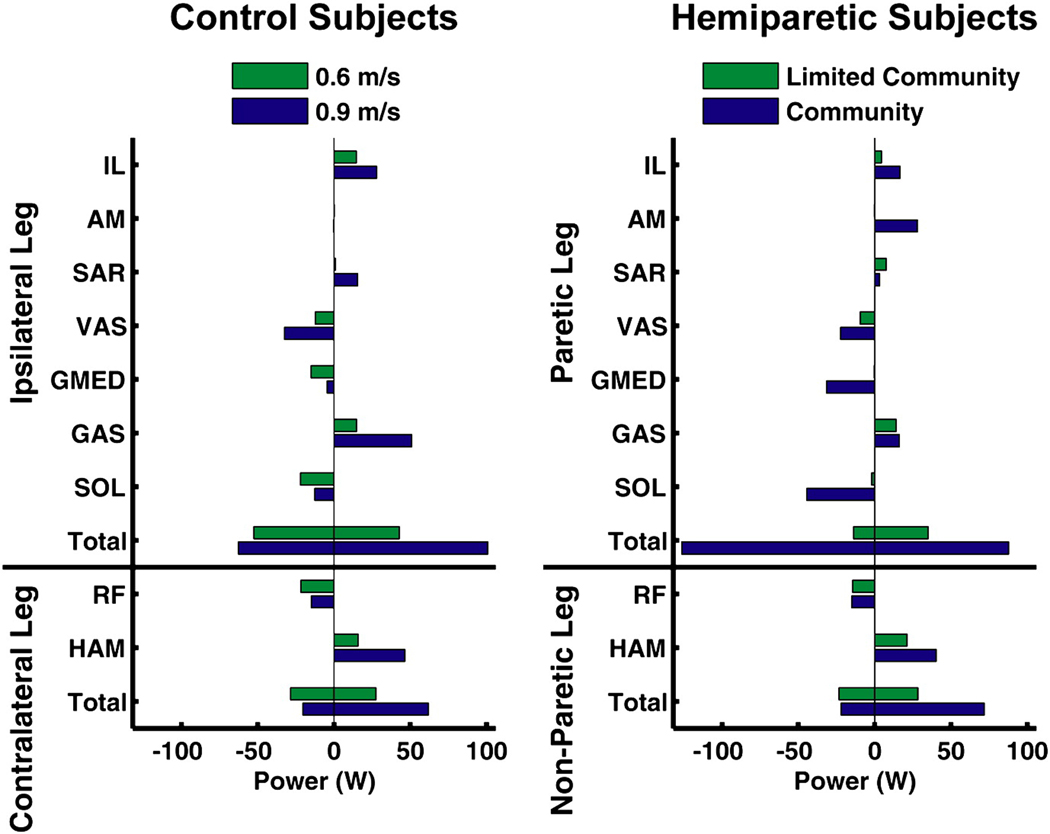Figure 2.
Average muscle contributions to swing initiation (i.e., net power transferred to/from the ipsilateral/paretic leg) by the control subjects during the ipsilateral pre-swing phase and the hemiparetic subjects during the paretic pre-swing phase, where Total is the sum of the positive and negative contributions from all muscles for the respective leg. In the control subjects, both the ipsilateral leg muscles (i.e., GAS, IL and SAR) and contralateral leg muscles (i.e., HAM) increased their contributions to swing initiation with increased walking speed. In a similar manner, both the paretic leg muscles (i.e., GAS and IL) and non-paretic leg muscles (i.e., HAM) increased their contributions to swing initiation with improved functional walking status. In the community walkers, paretic AM and GMED contributed positively and negatively, respectively to swing initiation, while these muscles did not contribute to swing initiation in the limited community walkers.

